BIOL 1030 / Topic 2a: Fundamentals of Animal Diversity
1/44
Earn XP
Description and Tags
Talks about the basics of animal diversity up until the divisions of clades stemming from the ancestral metazoan.
Name | Mastery | Learn | Test | Matching | Spaced |
|---|
No study sessions yet.
45 Terms
What are the 10 major phyla in the kingdom Animalia? Fun fact, Kingdom Animalia was once called Metazoa, due to multicellularity.
Porifera
Cnidaria
Chordata
Echinodermata
Platyhelminthes
Brachiopods
Annelida
Mollusca
Nematoda
Arthropoda
In the beginning, the eukaryotes diverged into two taxa, one being the animals and the other being the . . . ? What was the structure of this taxon, and what makes it different from animals?
Choanoflagellates, which were organisms that had a flagellum sticking through the collar-like structure composed of microvilli. They’re diff. from animals in a sense that they only had one cell, while animals had multiple cells.
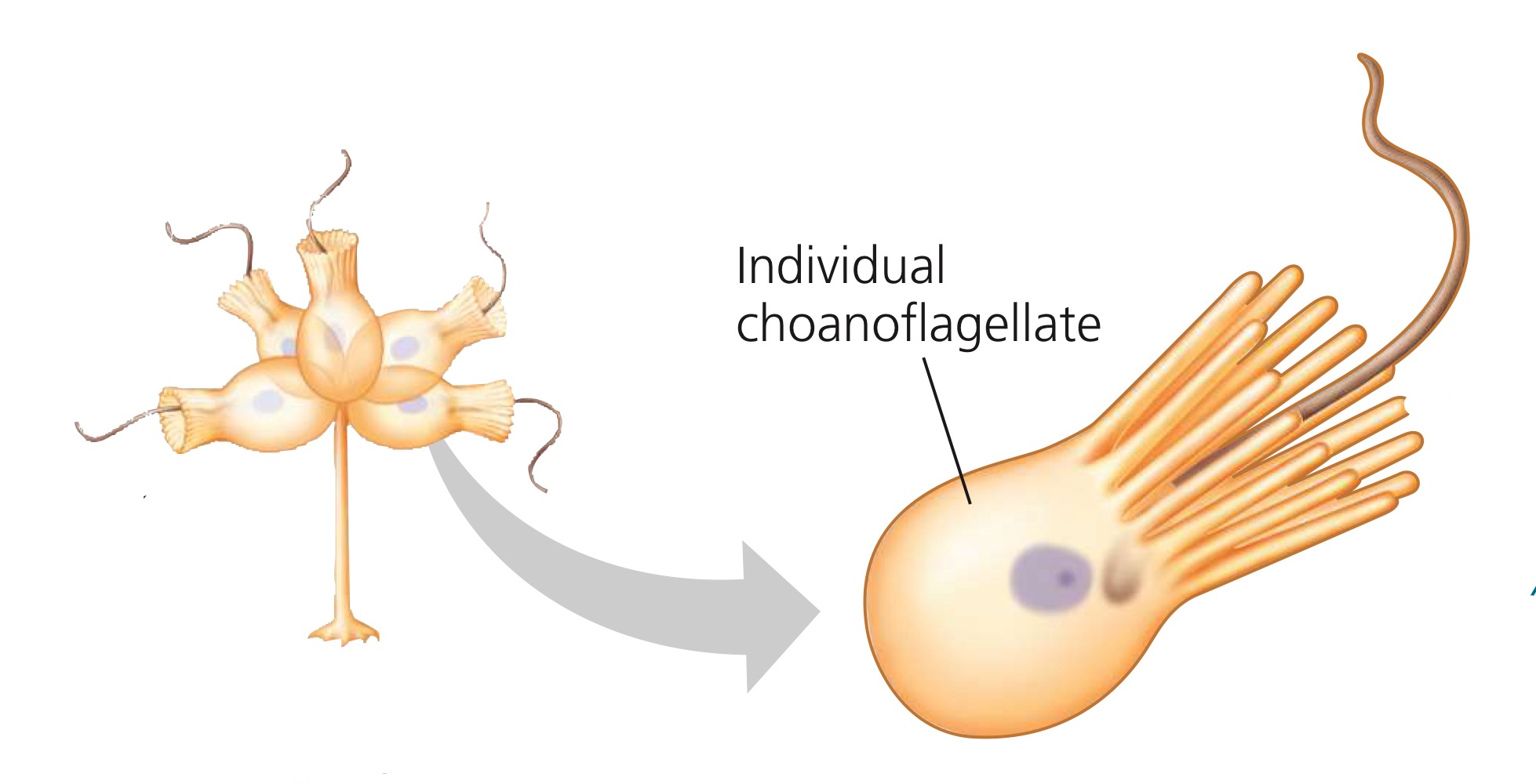
Because choanoflagellates only had one cell, what do these choanoflagellates come in as a group? What’s the group called, rather?
A group of choanoflagellates is called a colony.
Cleavage
A series of mitotic cell divisions without cell growth between the divisions.
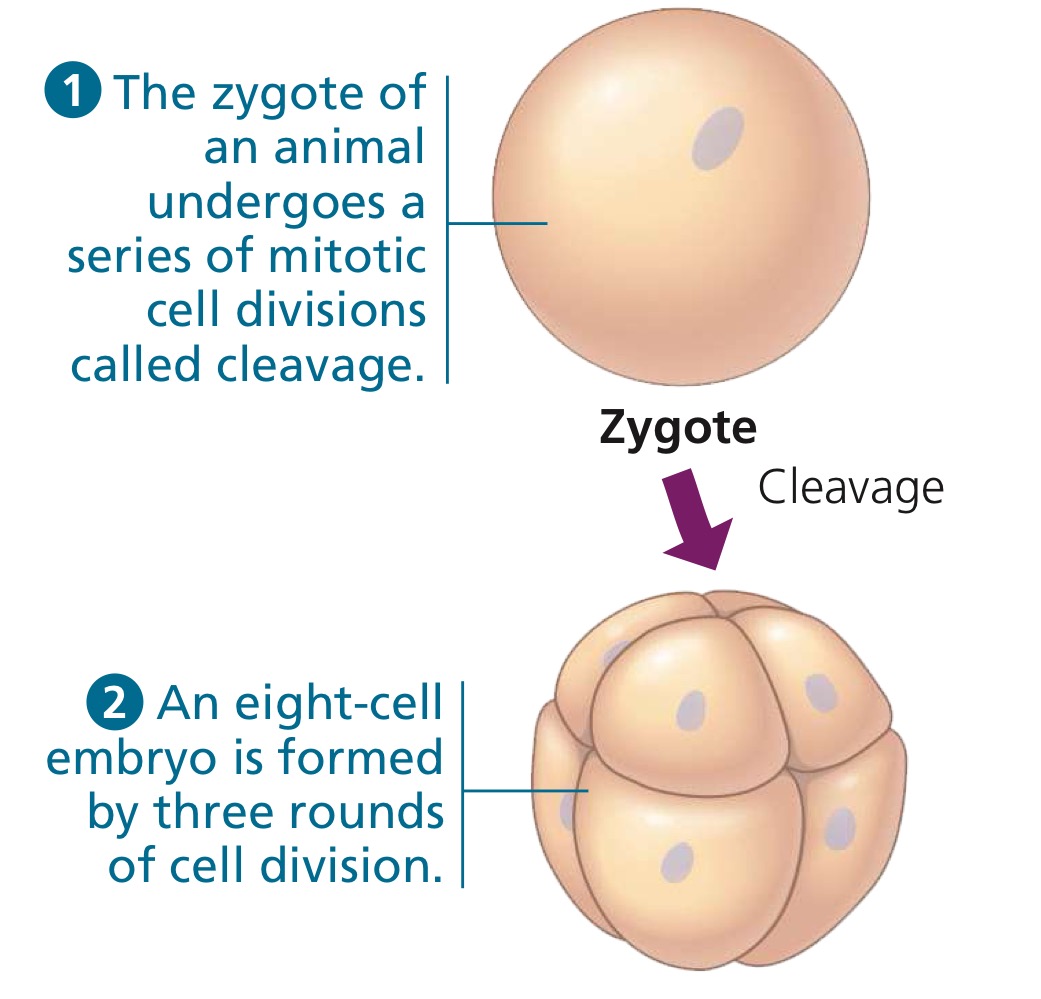
Blastulation
Multicellular stage in embryonic development to which the cleavage leads, wherein many animals take the form of a hollow ball.
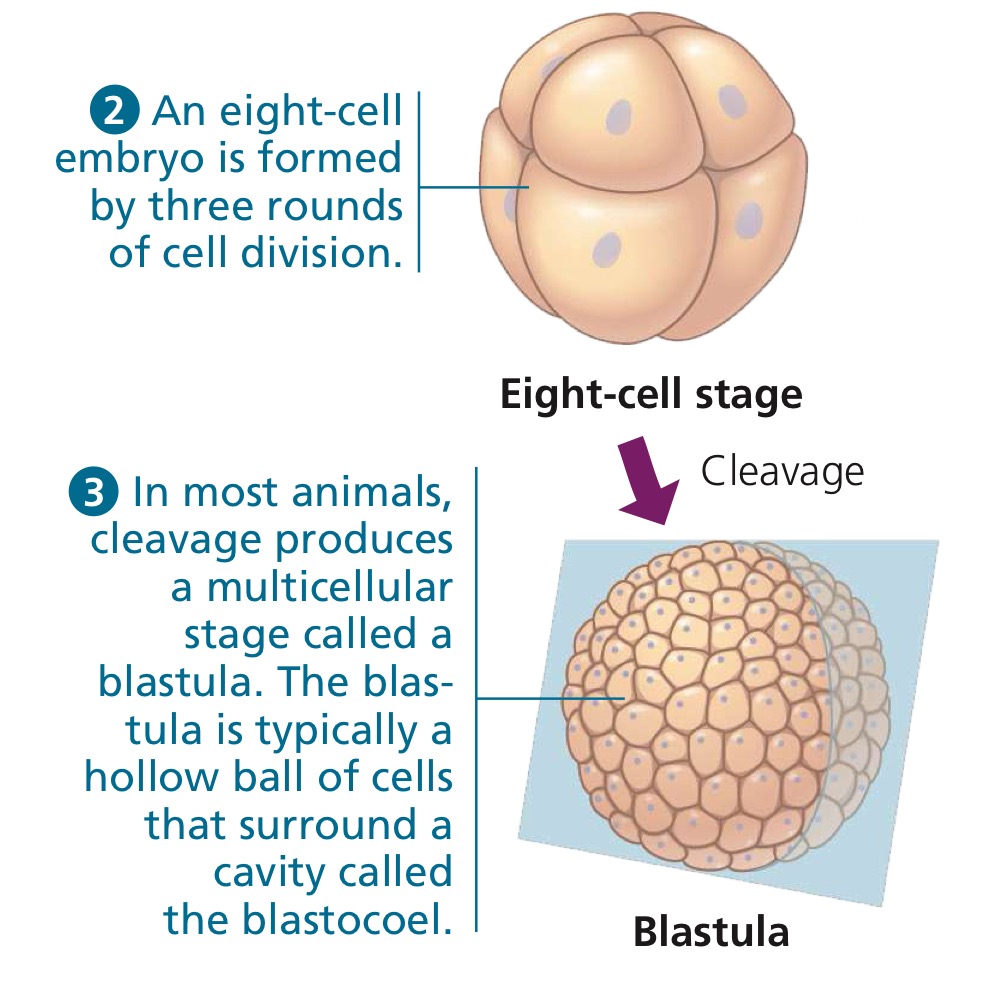
Blastula
The hollow ball surrounding a fluid-filled cavity called the blastocoel.
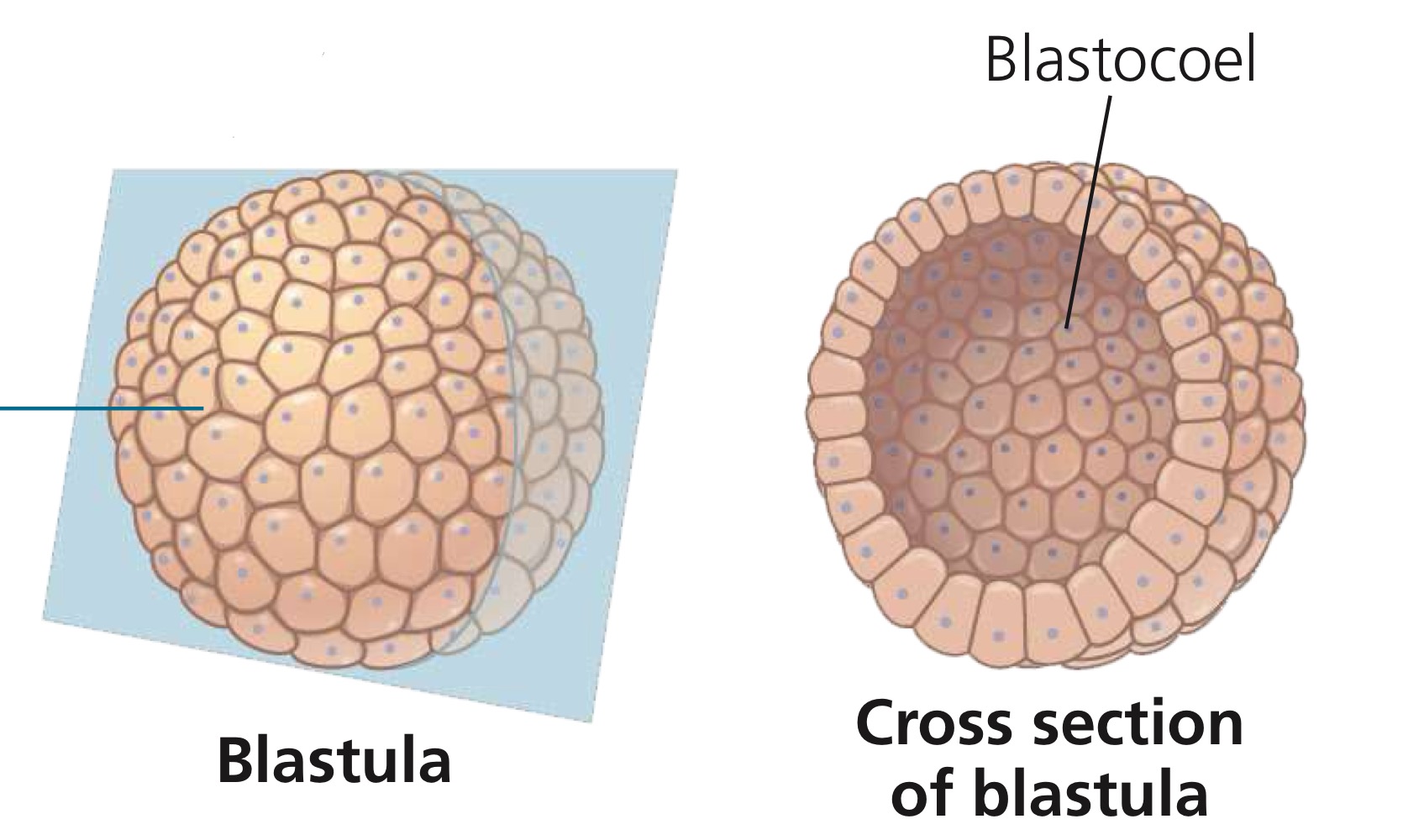
Gastrulation
The next stage of embryonic development after blastulation wherein the blastula transforms into a gastrula.
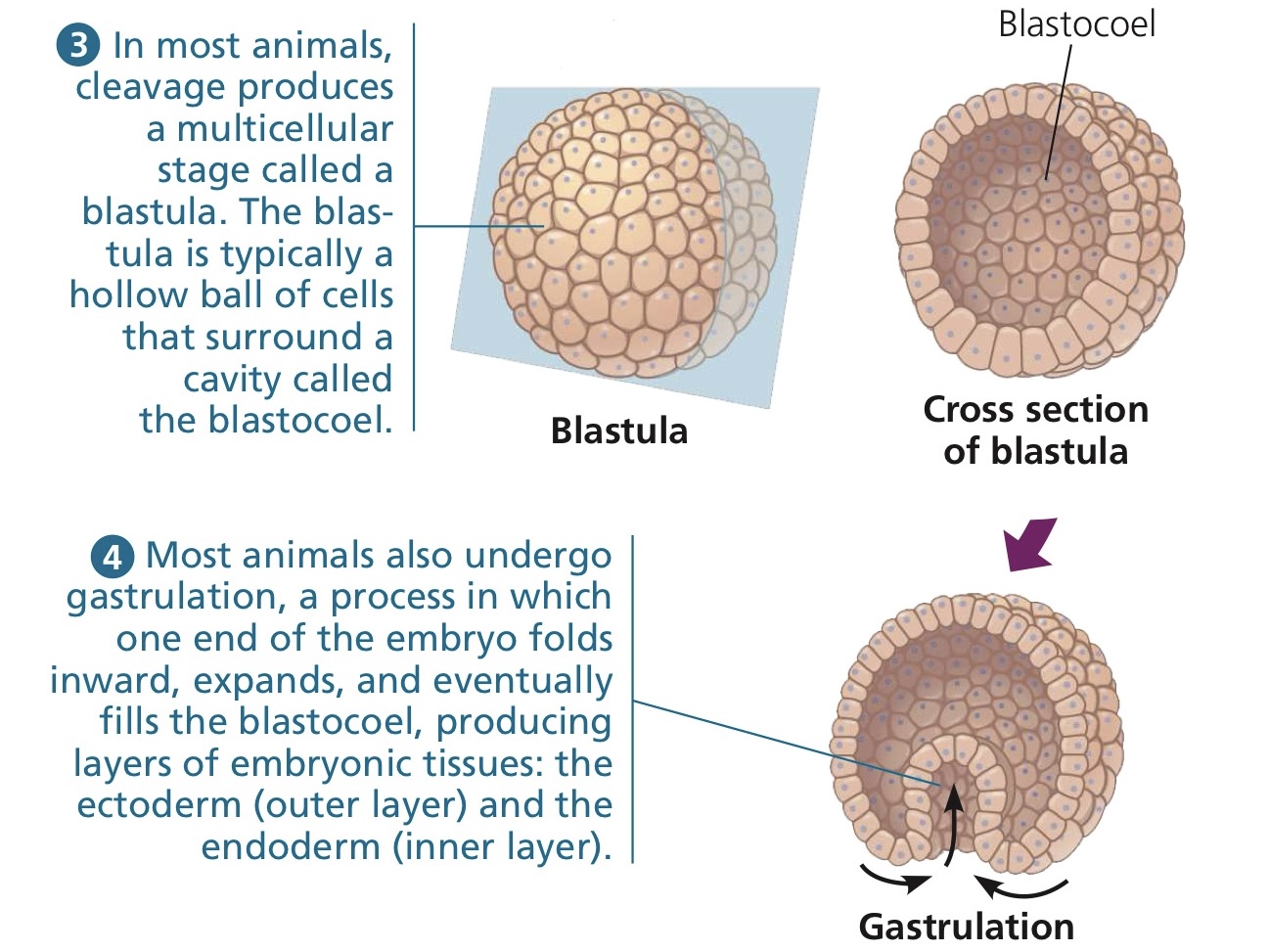
Gastrula
The multilayered structure of cells, following gastrulation.
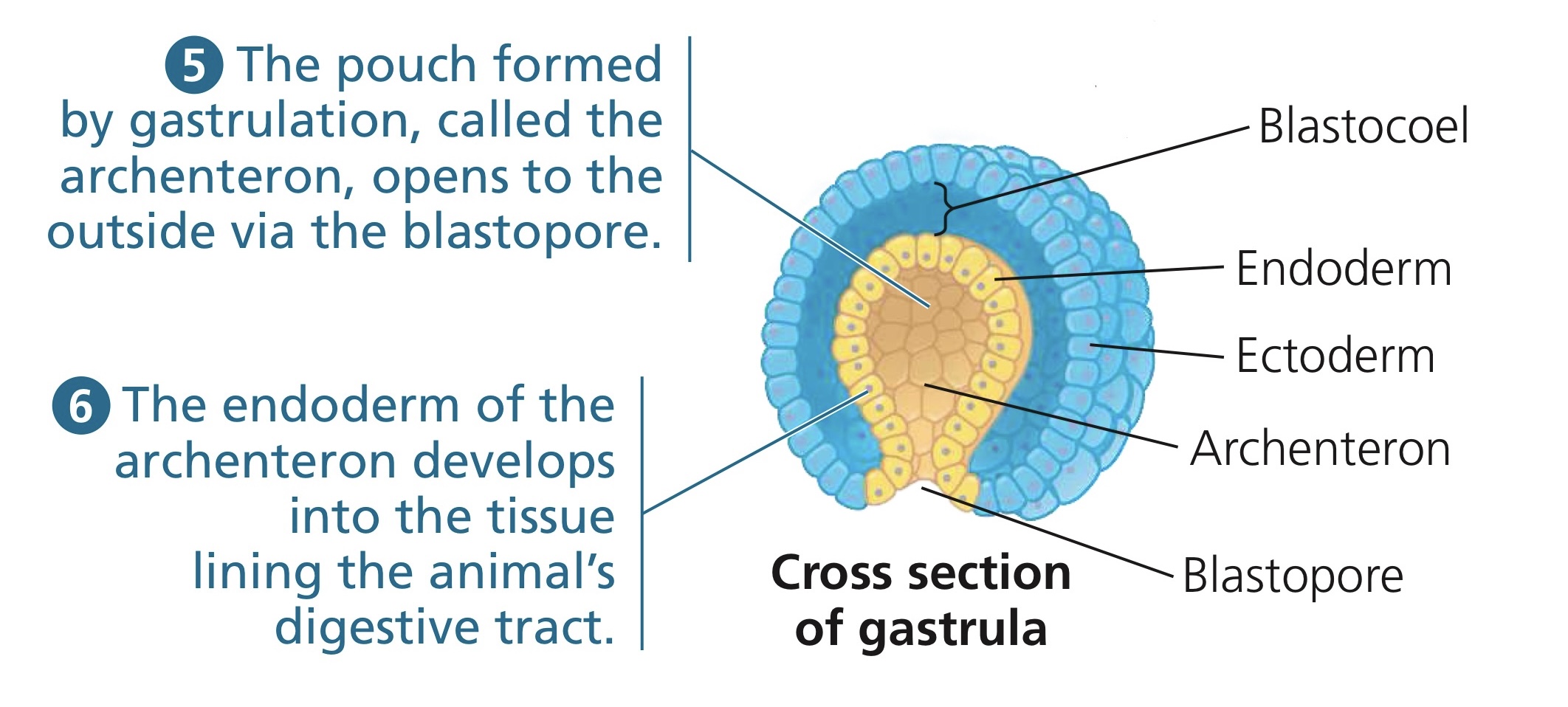
Archenteron
The pouch formed by gastrulation.
Blastopore
The first opening in the embryo and the point of invagination during gastrulation.
Organogenesis
The stage of embryonic development starting at the end of gastrulation and ending at birth, wherein the three germ layers form internal organs of organism.
Neurogenesis
The process wherein neurons are produced by neural stem cells that occurs heavily during embryonic development but continues after birth.
What two sets of traits help us organize and differentiate phyla? Provide the traits in each set.
Morphological set of traits, which include symmetry, tissues, and body cavities.
Developmental set of traits, which include cleavage and blastopore fate.
Animals with assymetry
Animals that do not have any internal plane of symmetry.
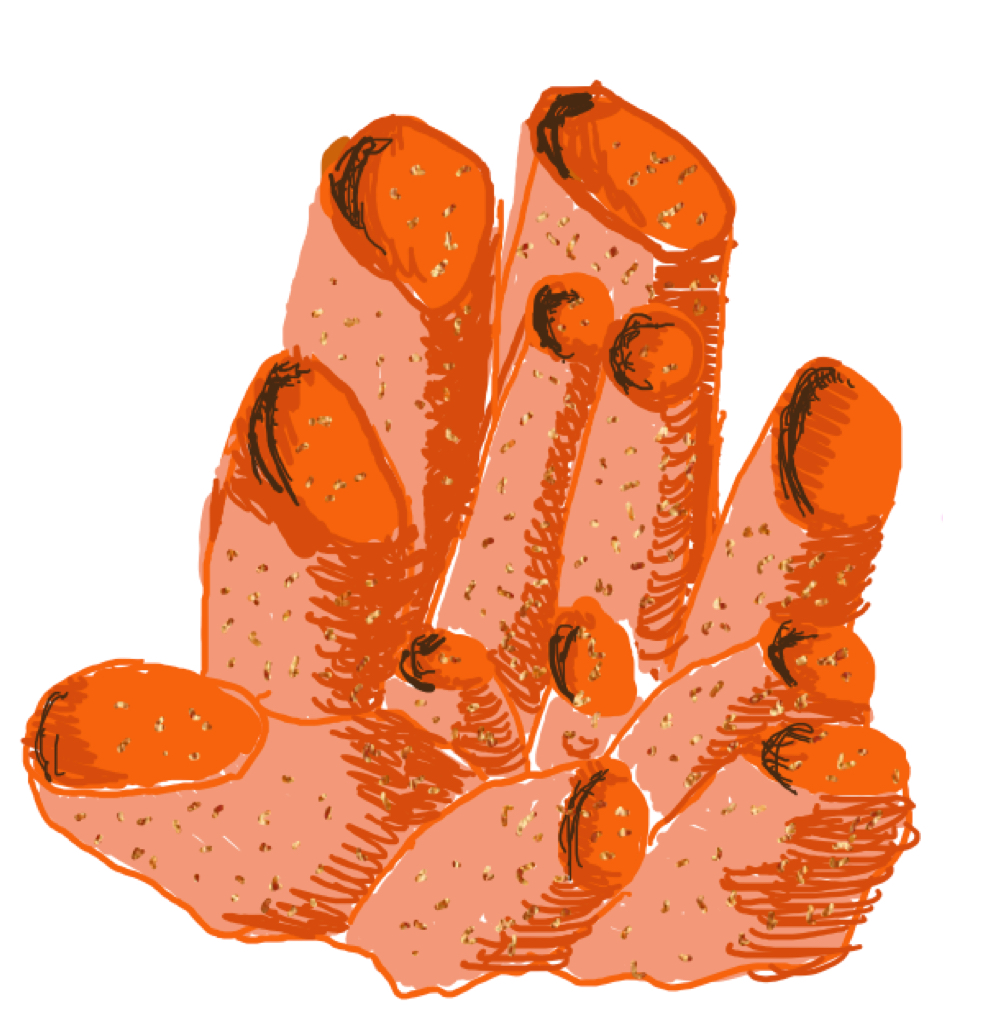
Animals with radial symmetry
Animals with multiple internal planes of symmetry; usually dipoblastic.
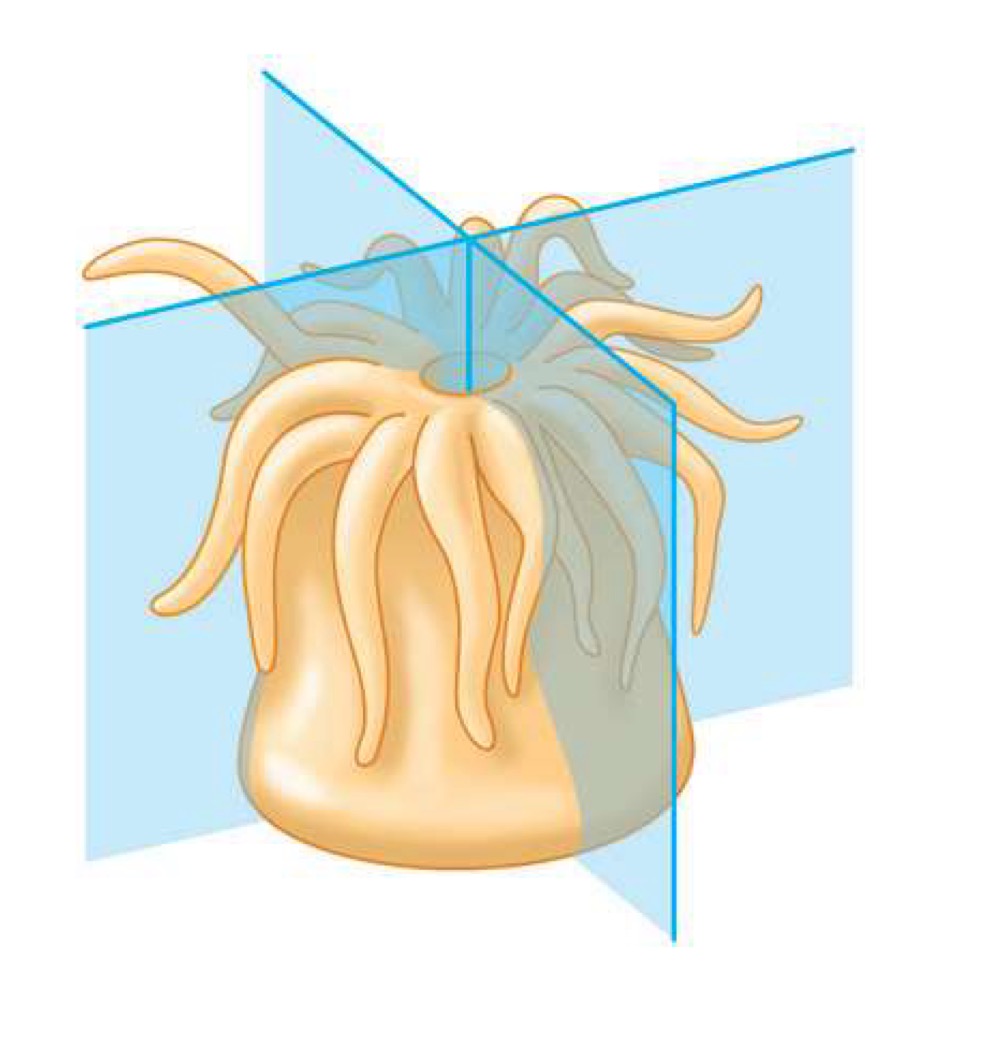
Animals with bilateral symmetry
Animals that have only one internal plane of symmetry; usually tripoblastic.
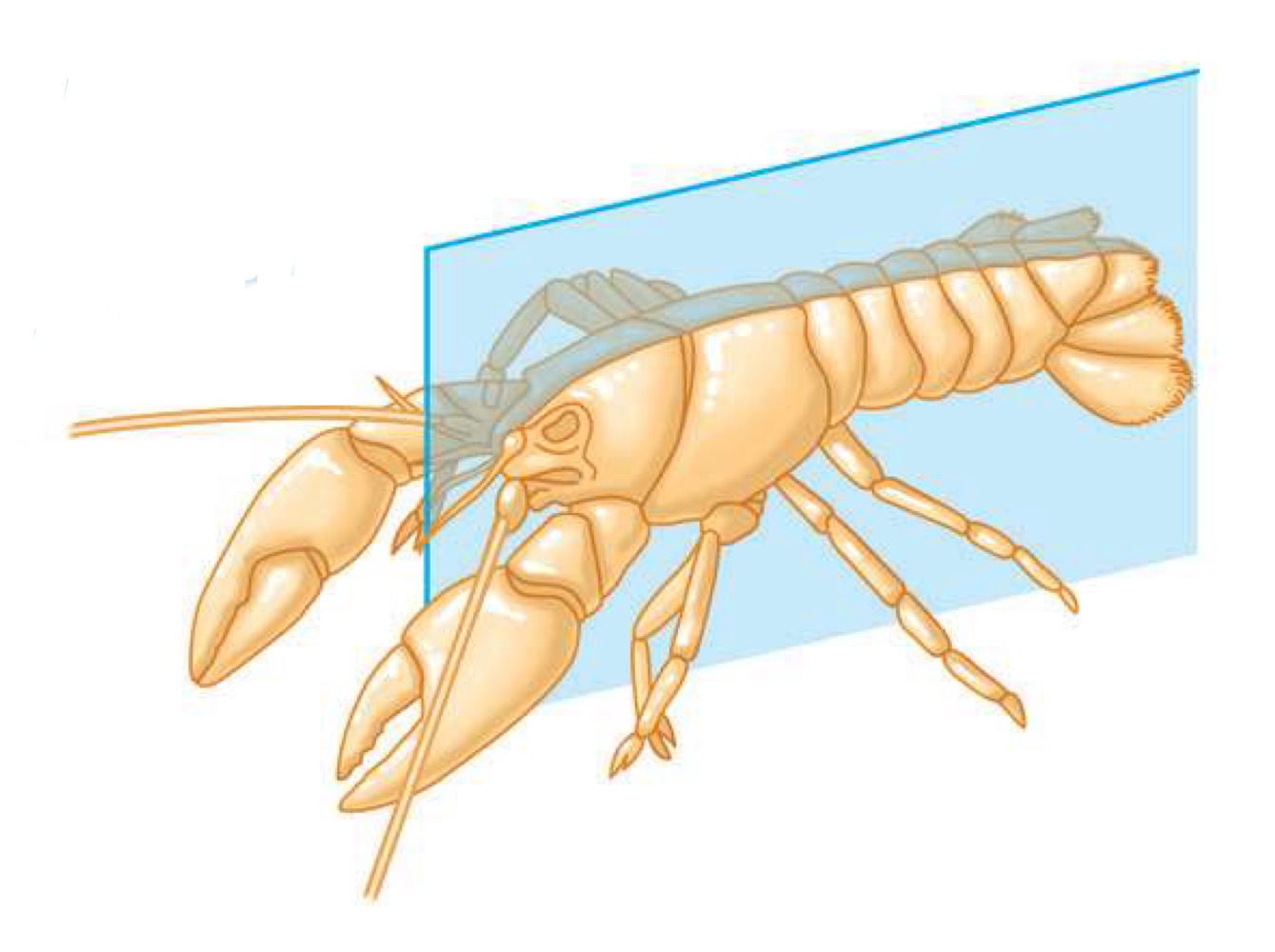
In animals with bilateral symmetry, what are the different sides of different axes?
For the first axis, we have the anterior (front) side and the posterior (back) side.
For the second axis, we have a right and left side.
For the third axis, we have the dorsal (top) side and the ventral (bottom) side.
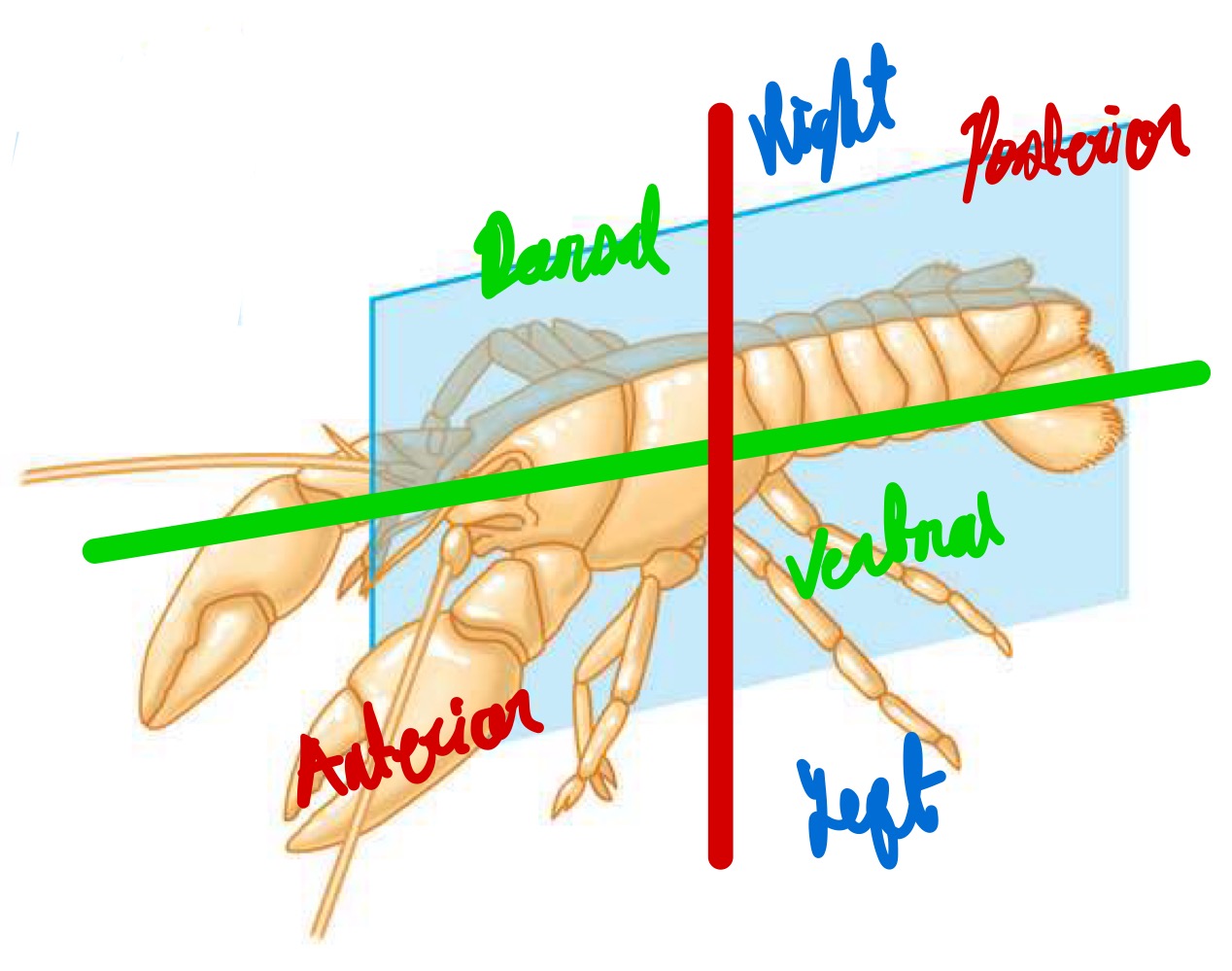
Cephalization
Evolutionary trend wherein sensory organs are concentrated to the head, present in nearly all animals with bilateral symmetry.
In animals with radial symmetry, what does the structure of multiple neurons look like? How about in animals with bilateral symmetry?
In radial symmetry, we have a network of neurons. In bilateral symmetry, we still get a network, but now we have clusterings of neurons, one small (ganglia) and one big (brains).
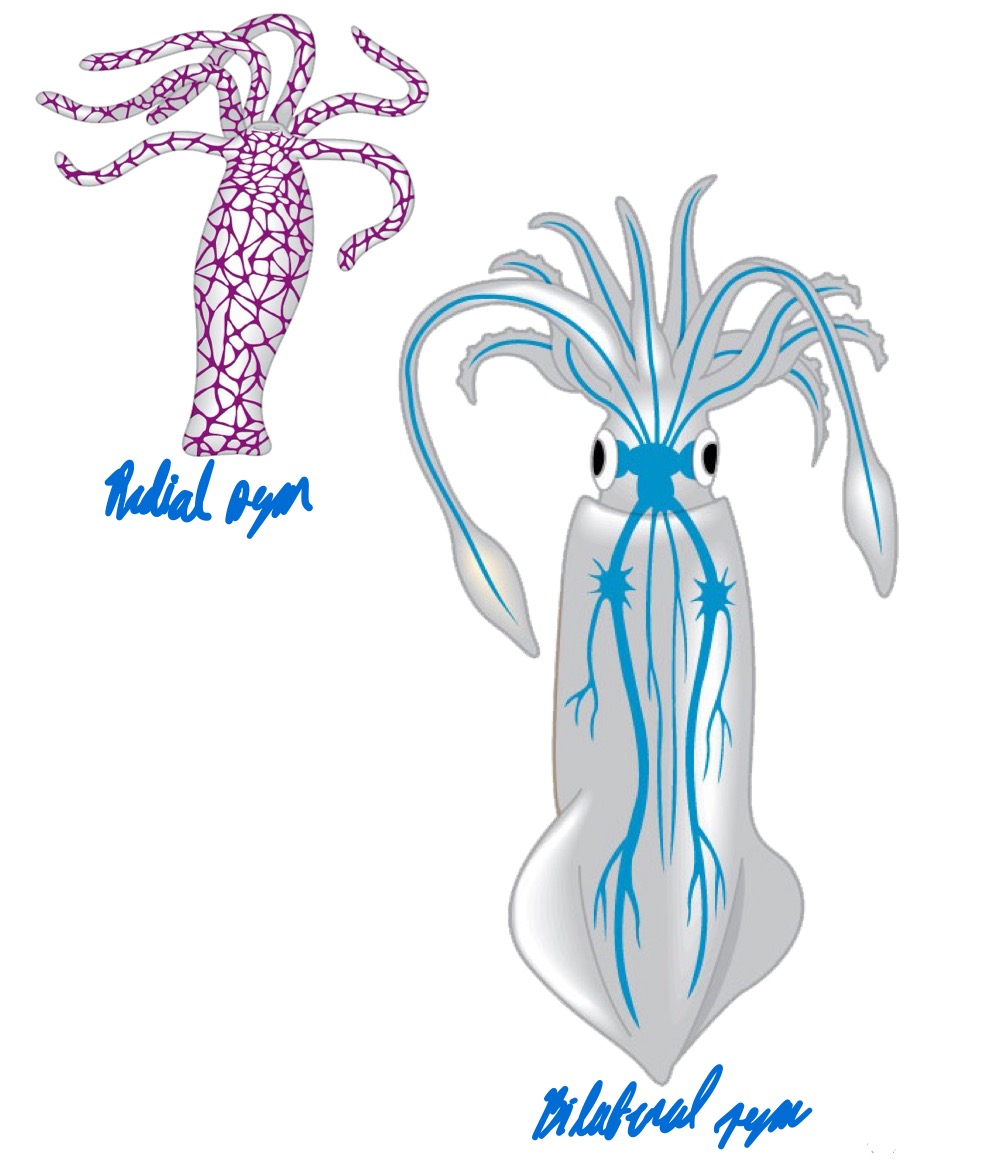
Why do animals with radial symmetry have a network of individual neurons, while animals with bilateral symmetry have a network of clustered neurons?
Animals with radial symmetry, i.e. cnidarians, have a network of individual neurons because, at the time and until now, it was advantageous and did not have any environmental pressure to make a network of clustered neurons. Meanwhile, animals with bilateral symmetry have the network of clustered neurons because they needed it at the time and until now.
What’s the advantage of having cephalization for bilaterally symmetric animals?
Shorter distance, faster response, more integration of body parts.
True tissue
A group of cells working towards a specialized goal and separated by protein membranes, wherein each cell needs each other to make this thang work.
Germ layer
Layer of cells formed after gastrulation, later transforming into various tissues and organs of the body.
Ectoderm
Outer germ layer covering the embryo, later on growing and remaining as the outer layer of animal and, in some phyla, the central nervous system.
Endoderm
Inner germ layer, lining the archenteron and giving rise to the lining of the digestive tract and organs such as the liver and lungs of vertebrates.
Mesoderm
Middle germ layer in between the endoderm and the ectoderm, giving rise to the muscles and most organs between the digestive tract and the outer covering of the animal.
Dipoblastic animals
Animals with two germ layers.
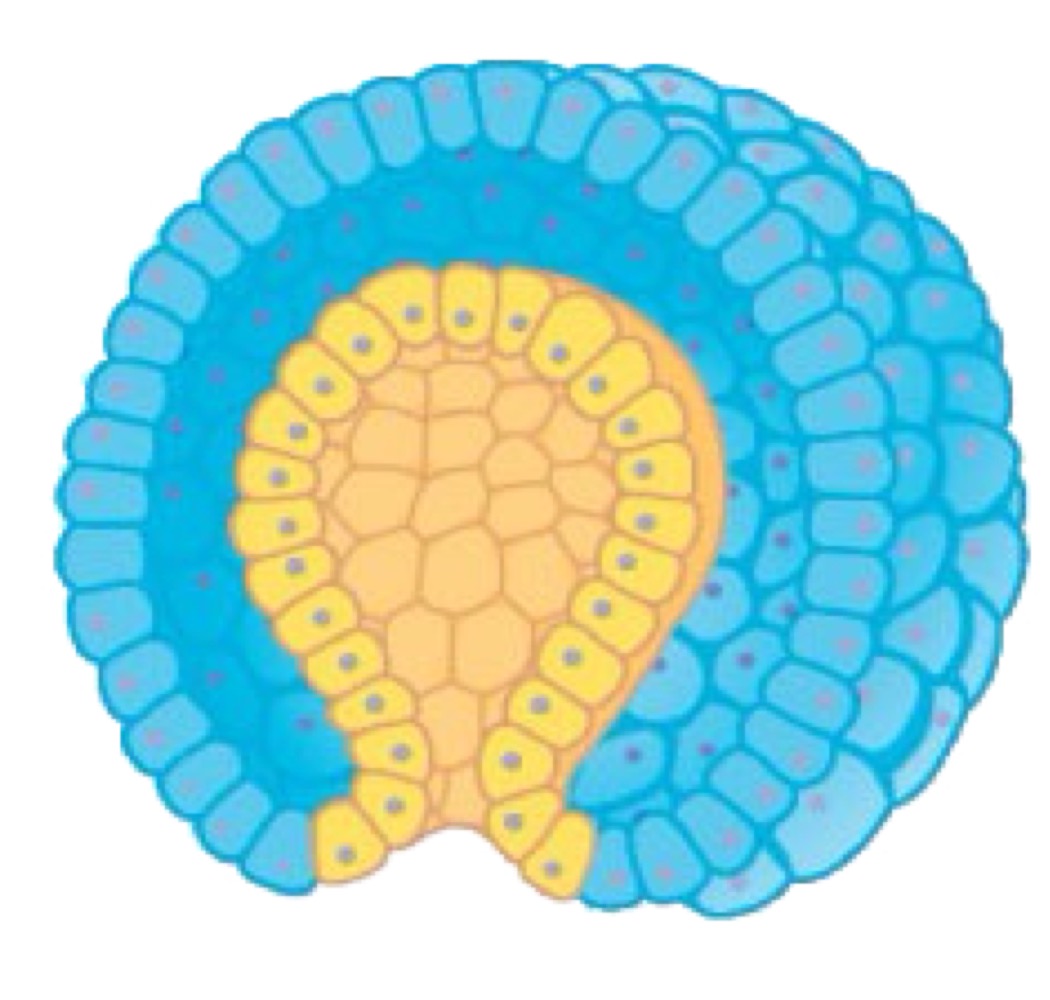
Tripoblastic animals
Animals with three germ layers.
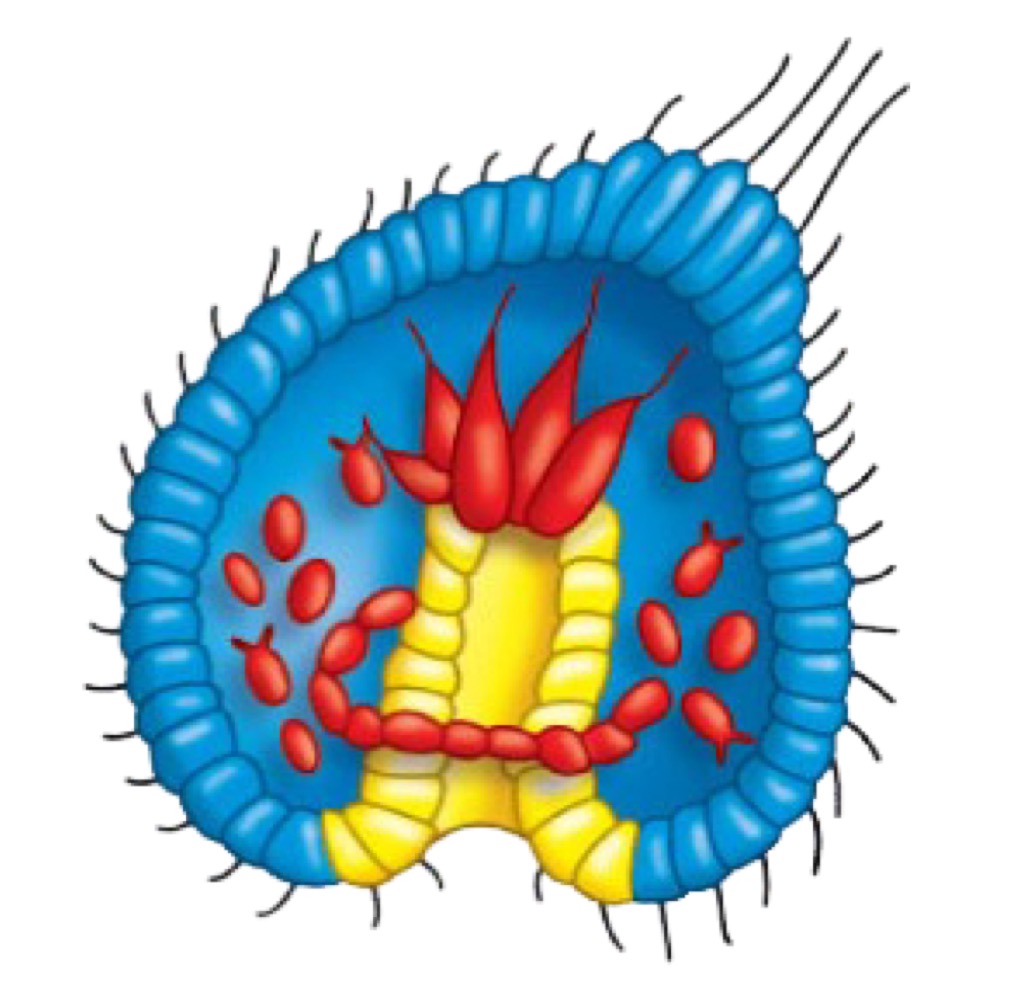
Cavity
Fluid-filled spaces located between different tissue layers, supporting structure of body and a transport mechanism.
Coelom
Cavity between endoderm and ectoderm.
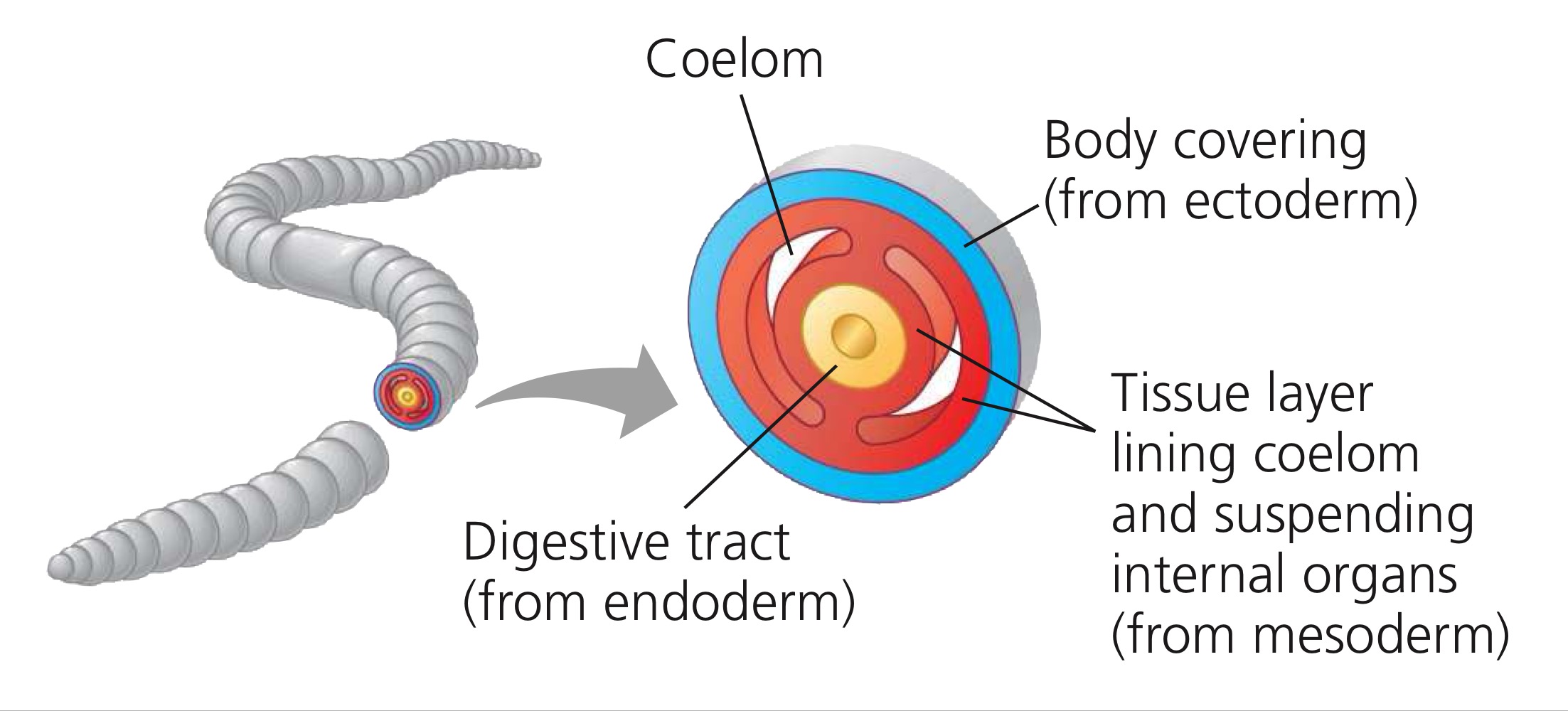
Hemocoel
Cavity between the endoderm and the mesoderm.
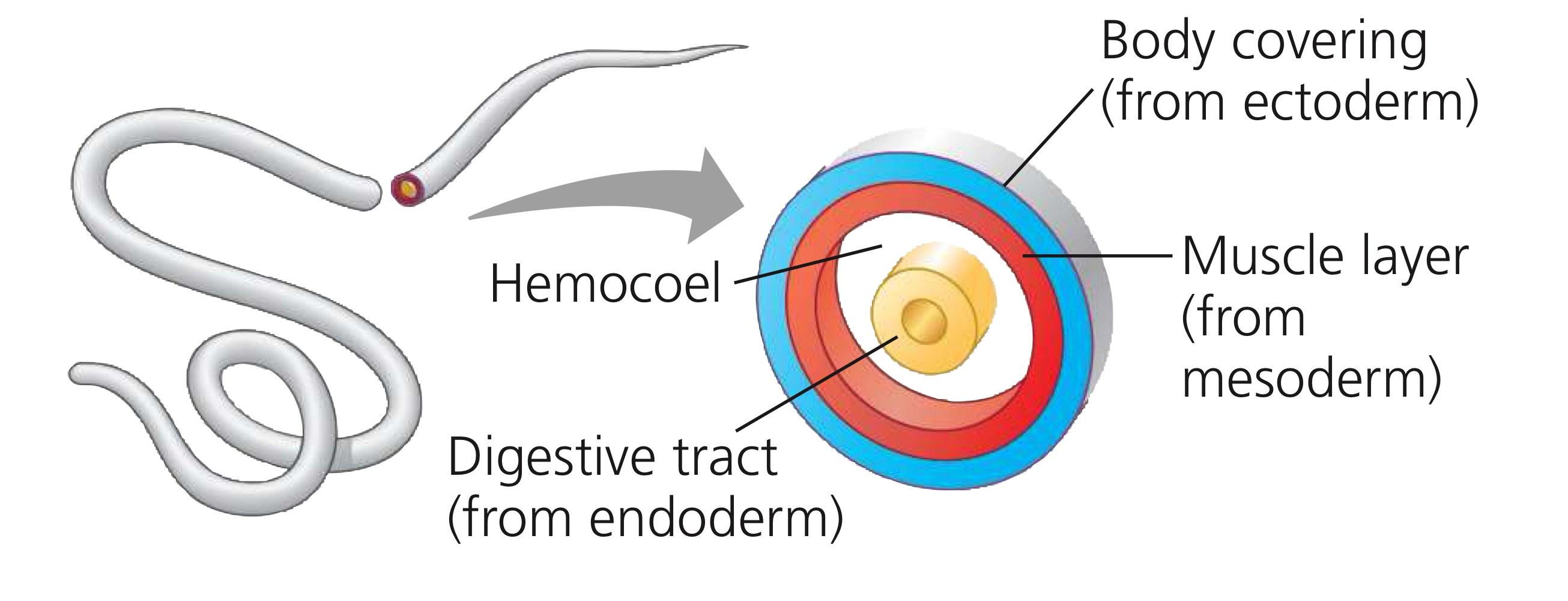
Acoelomates
Animals with no cavity, but using diffusion across their body’s surface as their transport mechanism.
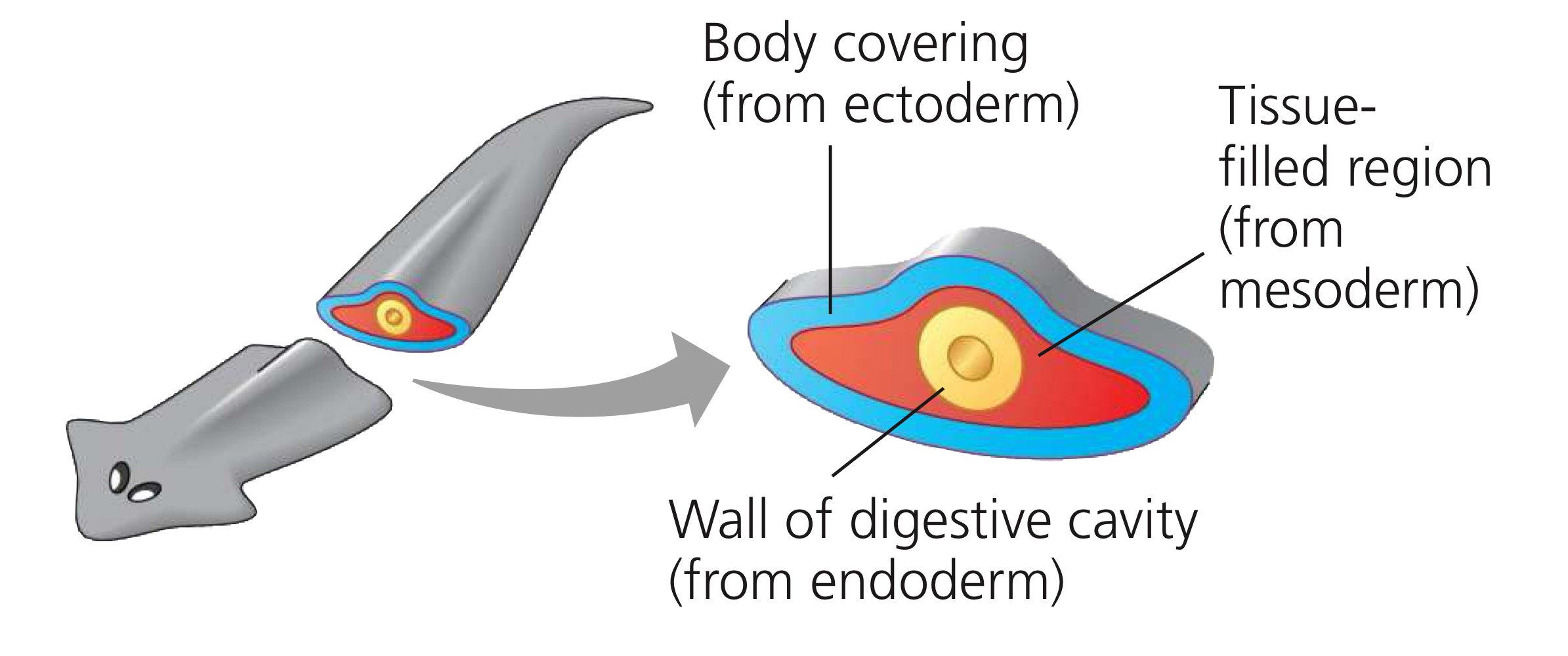
The two main patterns of developmental traits are protostome development and deuterostome development. What’s the difference between ‘em?
Protostome development has the blastopore becoming the mouth, while deuterostome development has the blastopore becoming the anus.
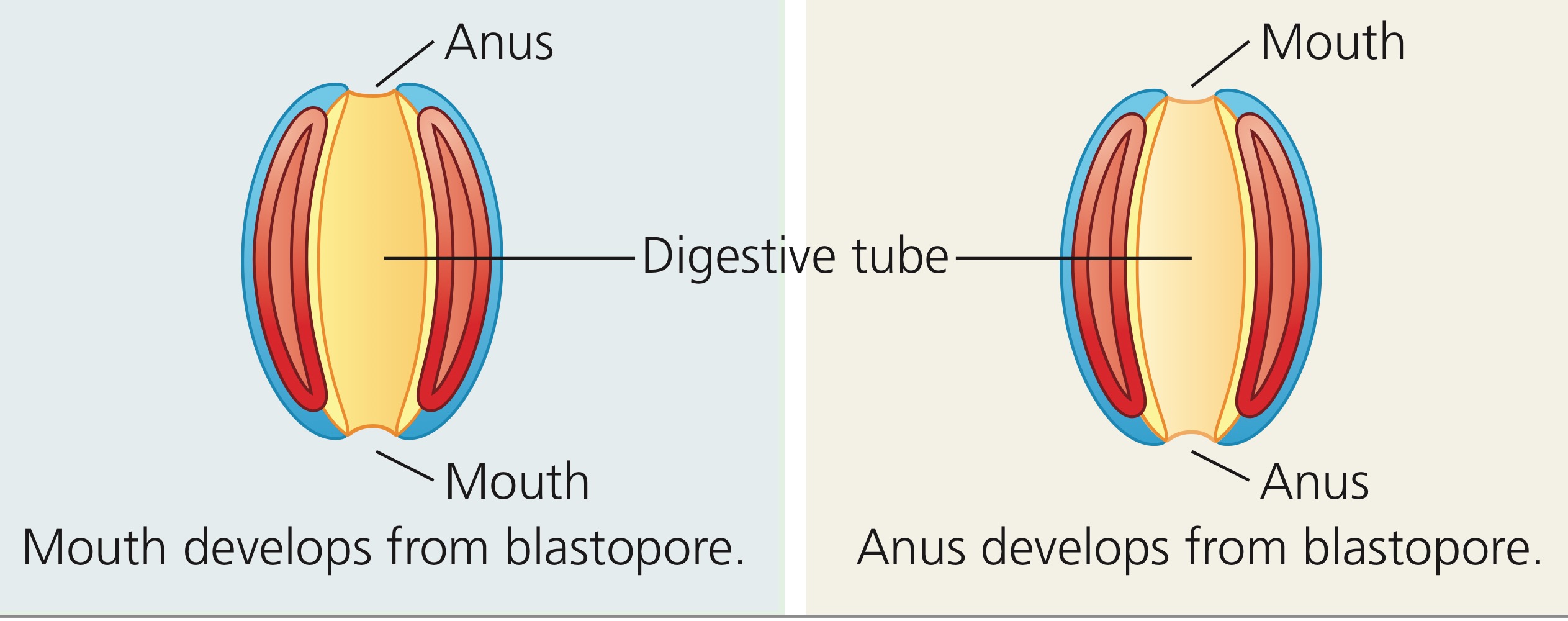
There are two types of cleavage, one for each pattern of developmental traits in animals. Define both of ‘em, and tell me in which can you find each.
Determinate cleavage refers to the cleavage wherein the functions of the cells have been set.
Indeterminate cleavage refers to cleavage wherein the functions of the cells have not yet been set.
You can find determinate cleavage in protostomes, while you can find indeterminate cleavage in deuterostomes.
What is spiral cleavage, and what type of developmental cleavage is it tied to?
The geometrical cleavage tied to determinate cleavage, wherein the planes of cell division are diagonal to the vertical axis of the embryo.
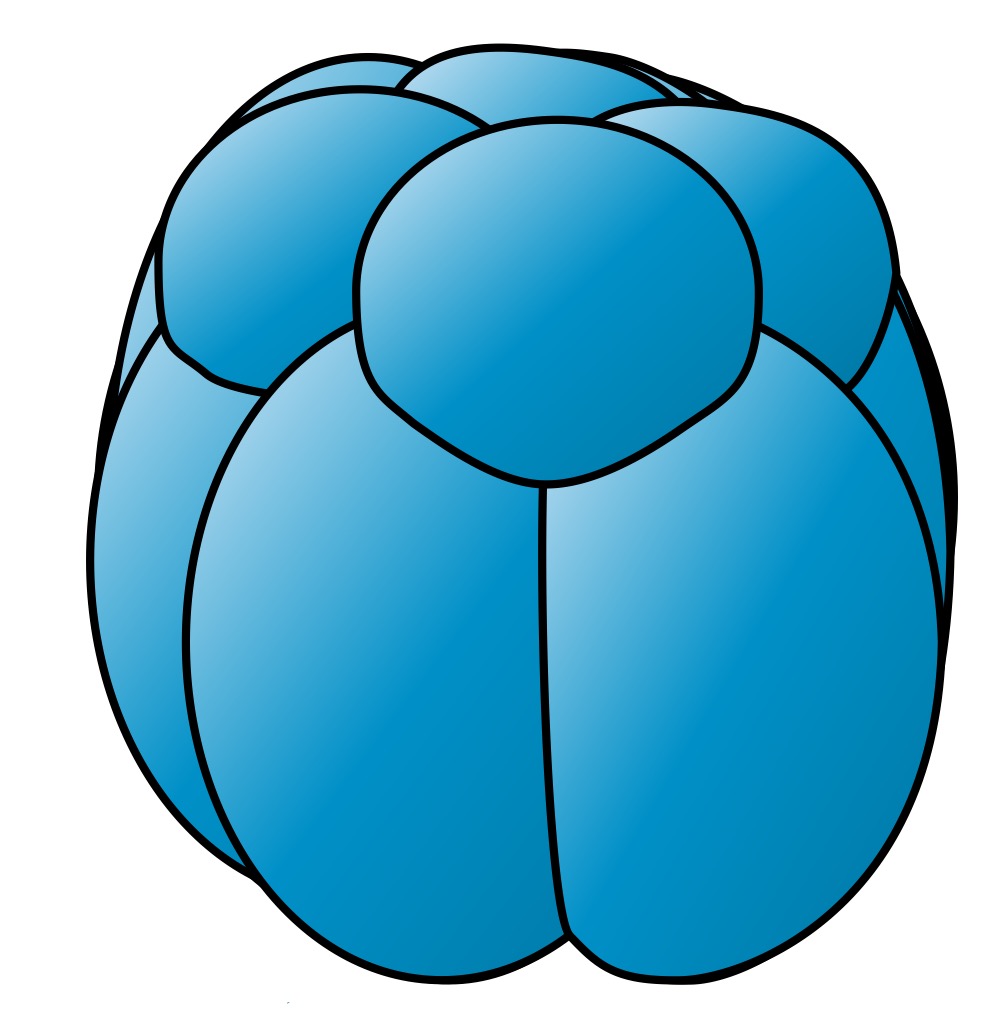
What is radial cleavage, and what type of developmental cleavage is it tied to?
The geometrical cleavage tied to indeterminate cleavage, wherein the planes are either parallel or perpendicular to the vertical axis of the embryo.
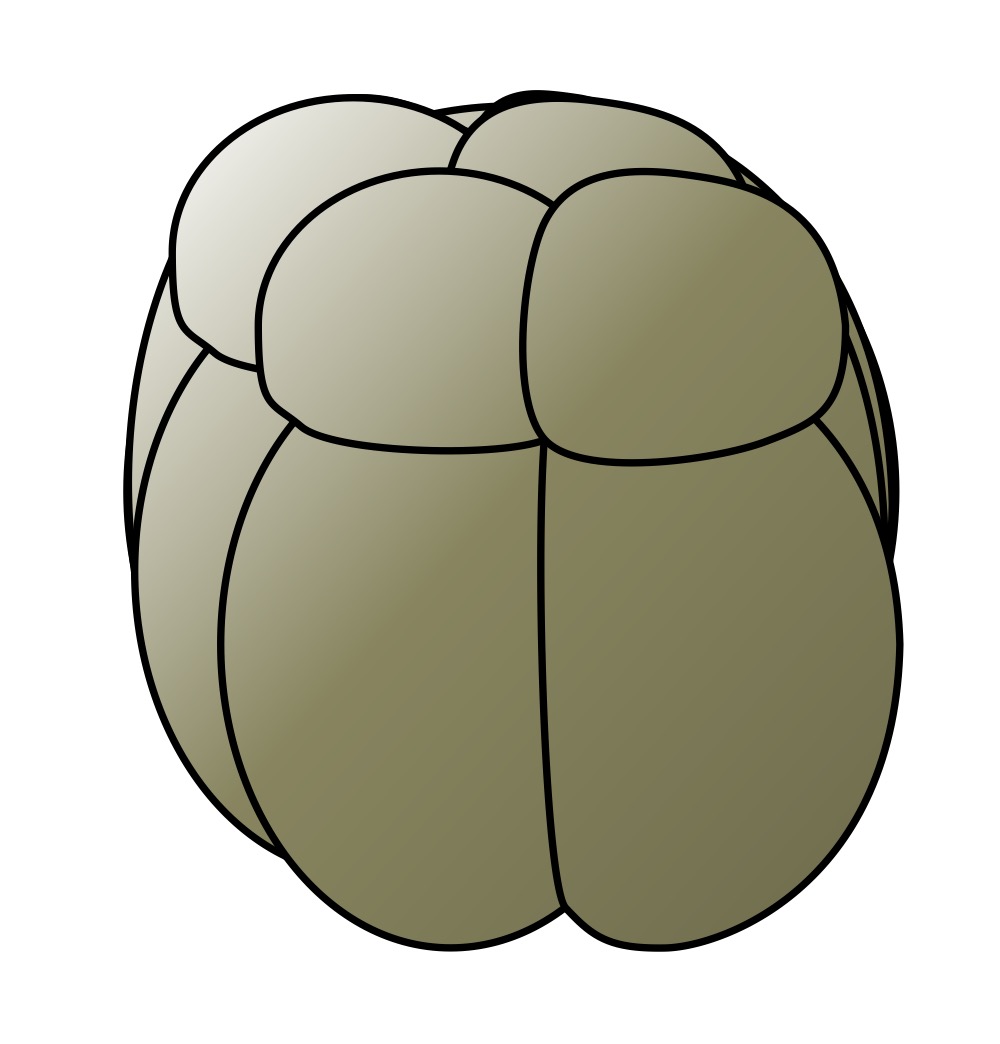
You can skip this card, but I tried making a mnemonic for geo. cleavage, dev. cleavage, and what clade each are in. Ready?
Patron Silver Double! (Protostome → Spiral → Determinate)
Double Rum with lots of Ice! (Deuterostome → Radial → Indeterminate)
Segmentation
The repetition of body units present as an analogous character in the 3 of 10 phyla: chordata, annelida, arthropoda.
Dividing the Metazoa: Does it have true tissues?
If yes, Eumatozoa.
If no, Parazoa.
Dividing the Eumetazoa: Does it have radial symmetry?
If yes, “Radiata.”
If no, “Bilateria.”
Dividing the Bilateria: Is it a deuterostome?
If yes, Deuterostomia.
If no, Protostomia.
Dividing the Deuterostomia: Does it have a water vascular system?
If yes, Echinodermata.
If no, Chordata.
Dividing the Protostomia: Does it have continuous growth?
If yes, Lophotrochozoa.
If no, Ecdysozoa.
Dividing the Lophotrochozoa: What are its four phyla?
Platyhelminthes, Mollusca, Annelida, and Barchiopoda.
Dividing the Ecdysozoa: What are its two phyla?
Nematoda and Arthropoda.